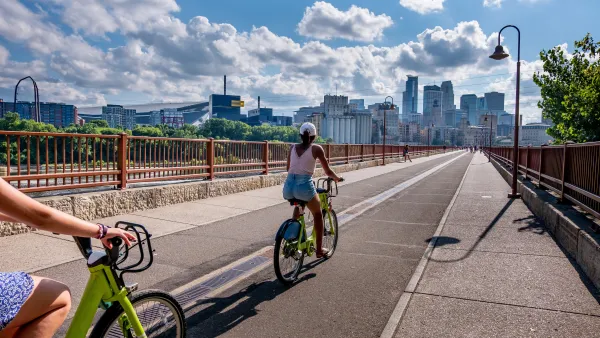Companies are looking to generate profits, but customers have come to expect low-cost, subsidized travel and raising prices will prove challenging.

Alana Semuels reports that shared mobility operators are facing a conundrum: how to start becoming profitable and meet the demands of stakeholders without losing the customers who have become used to cheap travel.
As these companies go public, the venture capital that allowed them to heavily subsidize travel options—by car, bike, and scooter—is disappearing. To turn a profit, they will have to raise prices, says Semuels:
[Sam] Korus, the analyst, thinks that shared scooter companies in particular are in trouble as subsidies come to an end. By his math, it costs scooter companies like Bird $2.55 per mile to rent dockless scooters to customers. Before they raised their prices, these companies were generating just $2.43 in revenue per mile, he says, meaning they will eventually have to raise prices to make money. But as they do, fewer people will use the service.
For some customers, purchasing their own devices is a more cost-effective option. Others will just stop using those services and revert to transportation modes they used before, such as walking or transit. Monthly passes or subscriptions are one strategy companies are considering to hold on to customers, and public subsidies are another possibility.
But the economic viability of shared mobility remains uncertain, says Semuels. "While we’re in an economic expansion at the moment, these companies appear particularly vulnerable to the threat of an economic slowdown. If another recession is coming, as observers like presidential candidate Elizabeth Warren have warned, consumers may be even less willing to pay for rides and other shared services once subsidies disappear."
FULL STORY: 'I'm Back to Riding My Own Bike.' Higher Prices Threaten Silicon Valley’s Mobility Revolution

National Parks Layoffs Will Cause Communities to Lose Billions
Thousands of essential park workers were laid off this week, just before the busy spring break season.

Retro-silient?: America’s First “Eco-burb,” The Woodlands Turns 50
A master-planned community north of Houston offers lessons on green infrastructure and resilient design, but falls short of its founder’s lofty affordability and walkability goals.

Delivering for America Plan Will Downgrade Mail Service in at Least 49.5 Percent of Zip Codes
Republican and Democrat lawmakers criticize the plan for its disproportionate negative impact on rural communities.

Test News Post 1
This is a summary

Test News Headline 46
Test for the image on the front page.

Balancing Bombs and Butterflies: How the National Guard Protects a Rare Species
The National Guard at Fort Indiantown Gap uses GIS technology and land management strategies to balance military training with conservation efforts, ensuring the survival of the rare eastern regal fritillary butterfly.
Urban Design for Planners 1: Software Tools
This six-course series explores essential urban design concepts using open source software and equips planners with the tools they need to participate fully in the urban design process.
Planning for Universal Design
Learn the tools for implementing Universal Design in planning regulations.
EMC Planning Group, Inc.
Planetizen
Planetizen
Mpact (formerly Rail~Volution)
Great Falls Development Authority, Inc.
HUDs Office of Policy Development and Research
NYU Wagner Graduate School of Public Service





























